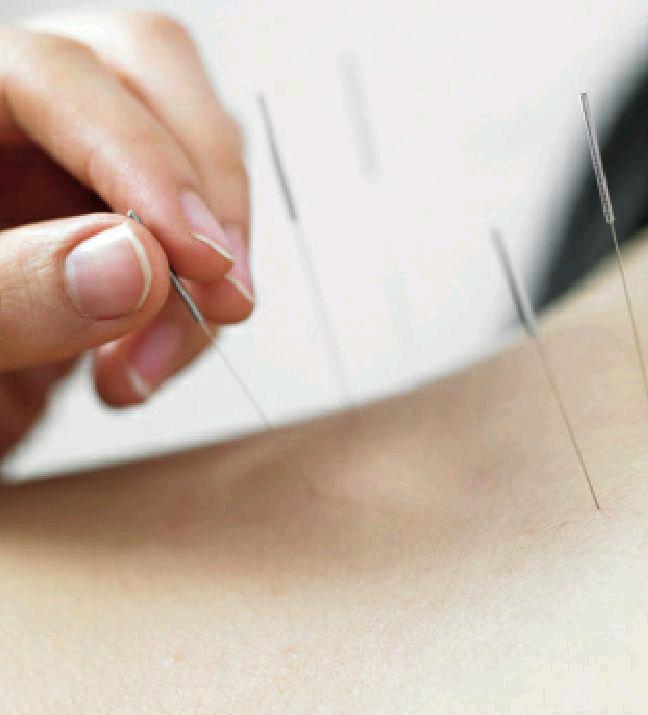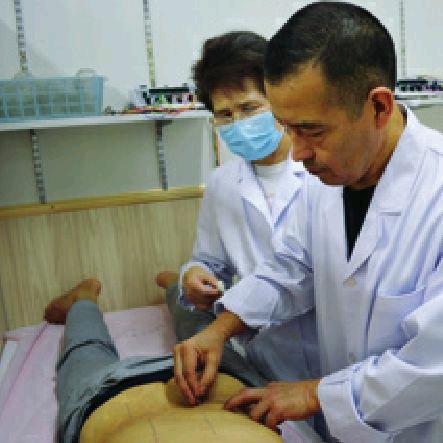The Finer Points Of Healing
2014-07-28ByBaiShi
By+Bai+Shi
Manuel Rodriguez-Vereau, 59, a Peruvian with one-quarter Chinese ancestry, arrives at the Guanganmen Hospital in Beijing on an early spring morning to study acupuncture therapy.
It is the second time Rodriguez-Vereau has received a short-term training of acupuncture and moxibustion therapy in China. Despite his upbringing in Peru, Rodriguez-Vereau has never forgotten his Chinese heritage. He learned the basics of TCM (traditional Chinese medicine) from his father at a young age and has continued medical training into adulthood.
“In my hometown in Peru, acupuncture is an effective and affordable therapy for treating some pains and illnesses,” Rodriguez-Vereau said to Beijing Review.
Several years ago, he moved to Sweden and opened a rehabilitation clinic in Malm?, a harbor city in southern Sweden. “I found that TCM is very popular in many European countries. Especially in Sweden, acupuncture has been increasingly recognized as a legitimate medical treatment. It was an opportunity for me to continue my career there,” he said.
Since the mid-1990s, acupuncture has grown in popularity in Sweden and other European countries. Currently, thousands of doctors and nurses in Sweden have received professional training in this ancient Chinese medical therapy, which has been used widely for rehabilitation and pain relief there, said Yang Jinsheng, head of Guanganmen Hospital.
Yang is also director of the international cooperation department under the State Administration of TCM of China. He has worked to promote TCM to the rest of the world for many years. According to a report of the World Federation of Acupuncture-Moxibustion Societies in 2013, acupuncture has become a clinical application in 183 countries around the globe.
“Chinese people believe that acupuncture can heal over 100 illnesses, and it is widely used as an adjuvant therapy for over 300 conditions,”said Yang. “Based on strict medical trails, the physicians practicing acupuncture reported to World Health Organization (WHO) that theyve found evidences that acupuncture has success in treating 43 conditions in 1996.”
“Apart from the WHO, hundreds of scientific trials have been undertaken to prove the efficacy of acupuncture at medical research institutes abroad,” Yang said.
Infinite knowledge
As an empirical medicine, acupuncture relies on dedicated practice. Mastering acupuncture requires many years—perhaps an entire lifetime—of dedicated study.endprint
Rodriguez-Vereau has been engaged in acupuncture and moxibustion treatment for nearly 16 years, but only recently traveled to the birthplace of the discipline to receive training from authentic Chinese experts.
“I came to Beijing to brush up on my skills a year ago. I was very impressed with the sophistication of skills and work ethic of TCM doctors in Beijing during my study there,” he said.
“As an old Chinese saying goes, knowledge is infinite. There is so much to learn, so I decided to come to Beijing again this spring for a twomonth acupuncture study,” he said.
For his latest study, Rodriguez-Vereau attended the advanced course hosted by China Beijing International Acupuncture Training Center (CBIATC) of the Institute of Acupuncture and Moxibustion under the China Academy of Chinese Medical Sciences (CACMS).
Zhou Yunxian, 76, a senior TCM doctor in CBIATC, is Rodriguez-Vereaus instructor in Beijing. Despite reaching retirement age, Zhou has stayed on at the Guananmen Hospital to continue training the next generation of medical professionals.
Zhou has researched and practiced acupuncture therapy for over 40 years. In 1975, when the International Acupuncture Class was established at the suggestion of the WHO and with approval of the Chinese Ministry of Health, Zhou became one of the first few teachers who were selected to teach foreign students acupuncture. Acknowledged as an International Acupuncture Trainer by the United Nations Development Programs, the International Acupuncture Class later became the CBIATC in 1983.
“Compared with other therapies, acupuncture is the most affordable physiotherapy for people in underdeveloped countries. In the meantime, as Chinese culture spreads abroad, acupuncture has also become popular in developed countries,” she said.
However, teaching acupuncture to foreigners is not easy.
“At the beginning, most foreign students attending the class had no idea about TCM theory and concepts. For example, when I talked about qi and xuewei (acupoint), they looked very confused,” Zhou told Beijing Review.
“The theoretical system of TCM is deeply philosophical. Moreover, it is very different from modern medical science. So we must put TCM concepts and theories into the simplest language during training sessions,” Zhou said.
In the past 30 years, CBIATC has provided training on theories and clinical practice of acupuncture and moxibustion to medical staff from more than 100 countries and regions.endprint
In the past 30 years, CBIATC has provided training on theories and clinical practice of acupuncture and moxibustion to medical staff from more than 100 countries and regions.
Zhou often takes her students to the clinic and teaches them how to handle the needles. She believes that clinical practice is an important part of the learning process for foreign trainees.
“Theory and hands-on experience are both important for acupuncture learners. One must feel the right amount of pressure to insert a fine needle into an acupuncture point - not so much that is causes pain, but enough for the needle to work. By repeated practice, one can gradually master the subtle skill,” Zhou said.
A way of health
For Rodriguez-Vereau, acupuncture is his career. For B?hm Lathavina, a housewife living in the Bavaria region of Germany, acupuncture is purely a recreational pursuit. Lathavina has long been interested in traditional Chinese medicine. She was a pharmaceutical worker in Germany, and currently lives in Beijing with her husband. Living in China has given Lathavina an opportunity to learn how to apply the techniques of TCM.
“After two weeks of learning, I already know all acupuncture points of the human body,”Lathavina said to Beijing Review.
In her opinion, TCM is a mysterious but effective treatment for some illnesses like stress and muscle aches. Recent studies have shown that stimulating nerve endings can provide pain relief, which is one of the key functions of acupuncture.
Despite cultural differences, TCM has been well received in Germany in recent years. Many acupuncture clinics have sprung up in the country. Moreover, the German government has approved putting TCM treatment into its national medical care insurance system, said Lathavina.
However, acupuncture has its weaknesses. It is a slow process, requiring a patient to receive regular treatment over a long period so that the therapy can work, said she.
Lathavina hopes to use acupuncture to treat her family for fatigue and sports injuries.“Theres a wealth of knowledge in traditional Chinese medicine for keeping people in good health, and acupuncture is just one example,”Lathavina said.endprint
